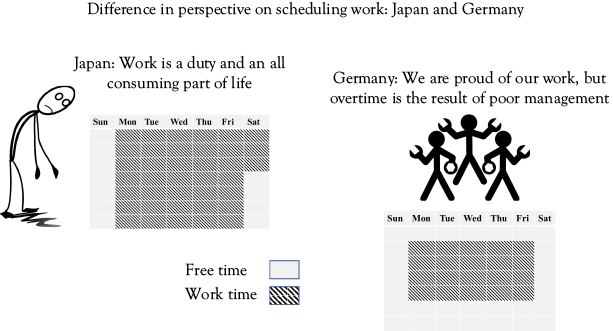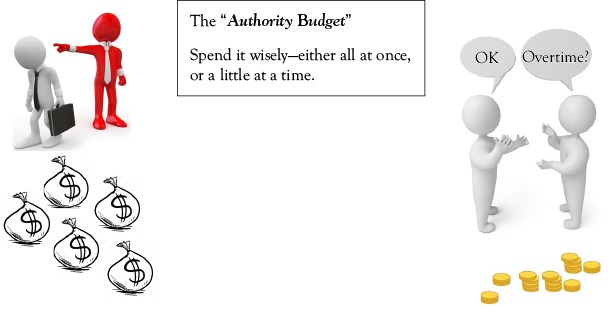Additional Leadership Considerations
The Globe studies may be useful to a degree, but they do not include all leadership issues that a project manager is likely to encounter in the global environment. One classic example of this is the day-to-day concern of scheduling work and overtime. For example, a project manager working in Japan need not request from employees that they work overtime. It is in the national culture of Japan to work overtime. It is not uncommon for most Japanese employees to work 60–80 hours per week. Often Japanese employees will catch the train in the morning and arrive at work at 8:30 a.m. and may leave work sometime between 10:00 p.m. and midnight. Although this is a grueling work–life balance, it is consistent with a country whose geography offers little in terms of natural resources and thereby relies on the labor of its citizens to survive. Also, such work practices are consistent with a culture of self-discipline or “restraint versus indulgence.” A project manager will find exactly the opposite of this situation when dealing with stakeholders in Europe and particularly within Germany. In this culture, overtime must not only be requested, but it must be negotiated (Figure 7.1).

Figure 7.1 Culture and work scheduling perspective
Further when a project manager requests the supplier or other stakeholders to work overtime, the initial reaction is that some mistake must have been made on the part of the management. The reason for this thinking is that if management had planned out the work more carefully, there would be no need for employees to work overtime. Therefore why should employees immediately respond to such a request to correct for problems caused by the management? Global project managers are likely to encounter completely different mindsets when leading project stakeholders in different regions. Leadership issues benefit from studying the labor environment in advance while obtaining high-level guidance from the Globe studies, Hofstede, Trompenaars, and finally, the World Values Survey.
Power and Influence in Global Projects
Regardless of leadership style deemed to be important in managing global team members and engaging with stakeholders, it is important to consider the desired outcome. A global project manager must consider what it is that is being attempted to achieve and then, based on these goals, consider how best to achieve it when interacting with global stakeholders. As the general findings of the Globe studies indicate, some cultures do not prefer the direct approach, they instead prefer direction that is far more subtle and nuanced. In contrast to this, some cultures may prefer a very direct approach and will feel lost if the leader does not take command and issue orders. Using the guidance from Globe, Hofstede, and Trompenaars, carefully consider what forms of power best fit within the context. Furthermore, for team members who do not respond well to the direct approach, envision what forms of influence may work equally well. In all cases global project managers should think of power in terms of the power and influence budget. A project manager can storm into a room and issue commands in a very direct and definitive way using emotion and an explosive expression of power and influence. However, once this is done, it may be difficult to engage in that behavior repeatedly and obtain the same results. Instead of spending all power and influence at once, perhaps it is better to mete out power and influence bit by bit over time, thereby maintaining a power and influence budget as is employed over time (Figure 7.2).

Figure 7.2 The authority budget
Pull Versus Push in Project Leadership
A further consideration for global project managers is that project managers typically lack formal, legitimate power and therefore tend to manage projects by focusing on influence rather than expressions of power. There is an old saying that “you can’t push on a string.” Likewise, project managers encourage others to carry out the work of the project rather than issue orders. Rather than directing, the project manager uses influence in a “pull” versus “push” manner by pointing out the benefits associated with working together with the project team. What motivates different cultures around the world will naturally vary. However, from an influence perspective, identifying both individual as well as group-based benefits of working with the team, being associated with the team, and achieving success can be a very effective approach to influence.
